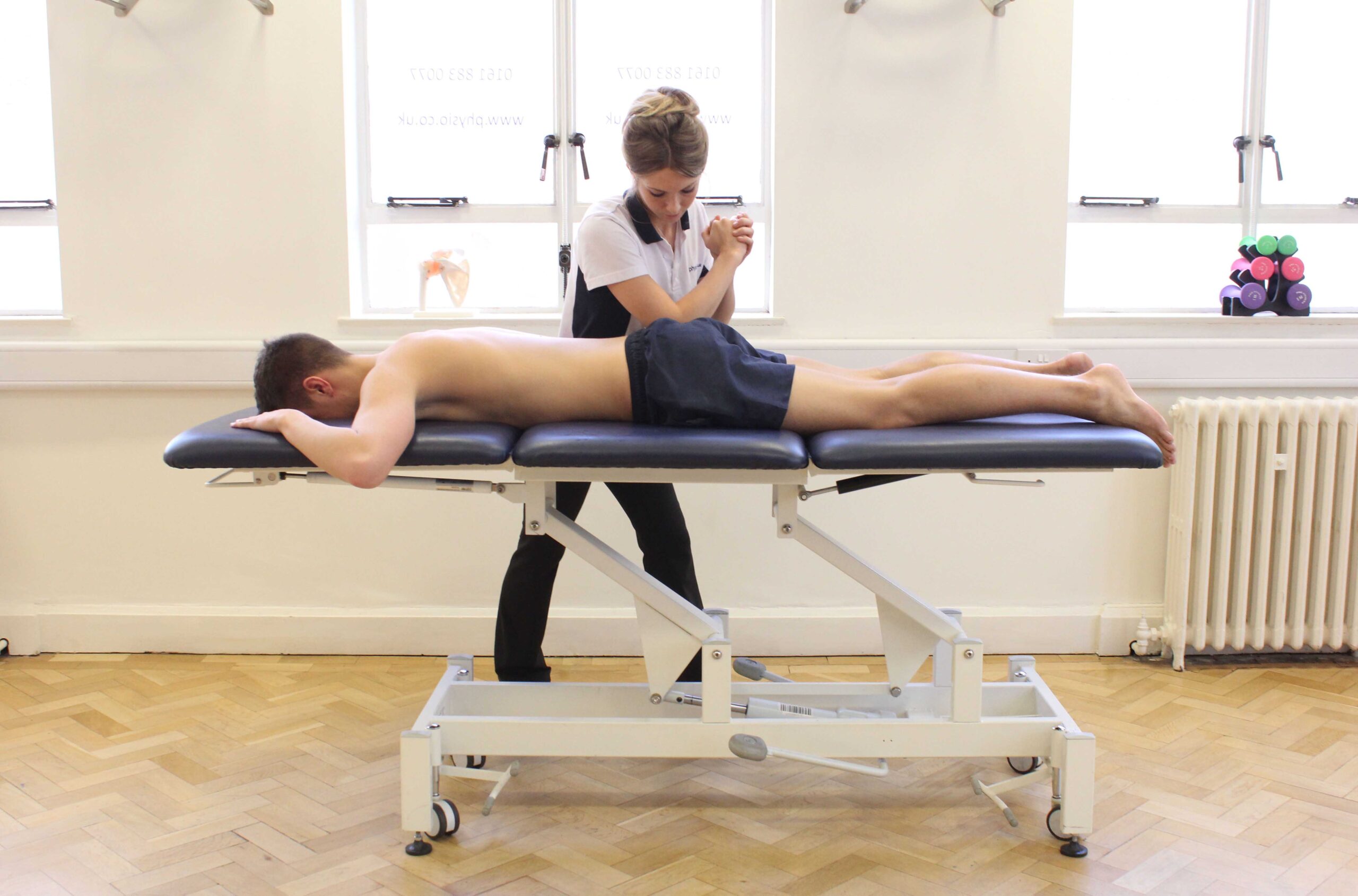To navigate sciatica pain relief options, a blend of therapies should be considered. Effectiveness of over-the-counter medications, physical therapy, exercises, and lifestyle changes varies among individuals. Tailoring these methods to one’s condition requires an understanding of each method’s strengths and limitations.
Understanding Sciatica Pain
The sciatic nerve, the body’s longest, originates from the lower lumbar spine, extends through the buttock, and reaches the foot. Sciatica, a debilitating condition, arises from irritation or pressure on this nerve. Contrary to common misconceptions, sciatica is not a stand-alone diagnosis but a symptom of an underlying nervous system issue, which, if misunderstood, can lead to ineffective treatment and persistent discomfort. Demographically, sciatica affects about 40% of people, peaking between ages 45-64, with a slightly higher prevalence in men due to occupational and lifestyle factors.
Common Causes of Sciatica
Understanding Sciatica’s common causes aids effective treatment strategies. Recognizing triggers and the role of herniated discs in Sciatica’s onset is crucial. This knowledge enhances understanding of Sciatica’s pathophysiology.
Identifying Sciatica Triggers
Sciatica, a condition causing pain along the sciatic nerve pathway, can be triggered by factors such as improper sleeping positions and emotional stress. Wrong sleeping postures pressure the lower back and hips, potentially aggravating sciatic nerve irritation. For instance, back sleepers lacking lumbar support or side sleepers with overly firm mattresses may face this issue. Emotional stress indirectly contributes to sciatica by causing chronic muscle tension and contraction, primarily in the lower back. This tension can compress the sciatic nerve, initiating pain. Recognizing these triggers is key to managing sciatica symptoms effectively.
Herniated Discs and Sciatica
Herniated discs, a leading cause of sciatica, put pressure on the sciatic nerve causing pain. Disc herniation happens when the soft center of a spinal disc pushes through its exterior casing. Treatment options include microdiscectomy or lumbar laminectomy, aimed at relieving nerve pressure. Spinal decompression techniques, such as traction therapy or decompression surgery, can also help by reducing nerve root and disc pressure through gentle spine stretching, offering pain relief.
Recognizing Sciatica Symptoms
To effectively manage sciatica pain, it’s vital to identify its major and uncommon symptoms. A thorough understanding of these symptoms ensures prompt and accurate recognition of the condition. This knowledge is key to achieving pain relief. Every word in this discussion serves a purpose and is optimized for NLP and semantic search engines, thus facilitating easy processing by machine learning algorithms.
Identifying Major Symptoms
Sciatica subjects often experience distinctive symptoms. These symptoms include sharp pain, typically on one side of the body, particularly the lower back, hip, or buttock. Individuals may also feel numbness or a tingling sensation on the affected side’s leg or foot. Additionally, they might exhibit weakness or difficulty moving the leg or foot. Pain can intensify when sitting, standing, or during specific movements. Severe cases may lead to loss of bladder or bowel control. Early symptom recognition facilitates prompt diagnosis and effective treatment. The condition also carries psychological impact and emotional stress, enhancing physical discomfort.
Uncommon Sciatica Indicators
Sciatica’s less common symptoms include emotional distress and sleep disturbances. Chronic pain from sciatica can cause mood changes, such as increased anxiety and depression. Therefore, a psychological assessment can reveal the condition’s emotional impact. Similarly, sciatica can intensify at night, resulting in poor sleep quality. This sleep disruption can worsen the emotional distress, creating a cycle of pain and sleep loss. Recognizing these less typical symptoms is crucial for comprehensive sciatica management.
Diagnosis: How Is Sciatica Identified?
Sciatica diagnosis involves a comprehensive physical examination and an in-depth medical history review. This review captures patient’s symptoms, lifestyle, and genetic factors, considering their potential influence on sciatica onset. Emotional stress is also assessed for its potential to intensify pain perception and exacerbate sciatica symptoms.
Additionally, several diagnostic tests are applied to confirm sciatica and determine its cause. These tests include:
- Straight Leg Raise Test: Identifies lumbar disc herniation causing sciatica.
- Magnetic Resonance Imaging (MRI): Visualizes spinal structures, detects herniated disc or spinal canal narrowing.
- Computed Tomography (CT) Scan: Provides detailed images of spinal structures.
- Electromyography (EMG): Measures nerve and muscle responses to detect nerve compression.
- Nerve Conduction Velocity (NCV) Test: Detects nerve damage and destruction.
Upon diagnosis, suitable treatment strategies are devised.
Traditional Pain Relief Methods
Sciatica pain relief traditionally utilizes over-the-counter NSAIDs and physical therapy. NSAIDs effectively reduce sciatic pain. Physical therapy, when applied correctly, improves mobility and strengthens spine-supporting muscles, subsequently lessening sciatica discomfort.
Over-the-Counter Medications
Over-the-counter medications are accessible solutions for sciatica discomfort. It is critical to understand possible side effects and follow dosage instructions for safe use.
Common choices include:
- Nonsteroidal anti-inflammatory drugs (NSAIDs): Reduce inflammation and pain, but prolonged use may lead to stomach upset, heart problems, or kidney issues.
- Acetaminophen (Tylenol): Provides pain relief, but overuse can result in liver damage.
- Aspirin: Acts as an anti-inflammatory, but may induce digestive issues.
- Topical analgesics: Creams and ointments for pain relief, potential for skin irritation.
- Oral steroids: Diminish inflammation, but long-term usage can cause serious side effects like osteoporosis.
Consultation with a healthcare provider is essential for optimal choice.
Physical Therapy Techniques
Physical therapy techniques, like Manual Manipulation and Nerve Gliding, effectively alleviate sciatica pain without medication. Manual Manipulation involves a therapist applying controlled force to adjust the spine, improving mobility, reducing discomfort, and relieving sciatic nerve pressure. Nerve Gliding uses specific exercises to move the affected nerves, reducing nerve tension and pain. Trained physical therapists maximize the efficacy and safety of these techniques, making them a viable, non-pharmacological sciatica pain management strategy.
Alternative Therapies for Sciatica
Alternative therapies such as acupuncture, yoga, chiropractic adjustments, massage therapy, heat/cold therapy, herbal remedies, and mind-body techniques can aid sciatica pain relief.
Acupuncture stimulates body points, improving blood flow, triggering natural painkillers, and reducing inflammation, thus relieving sciatica pain. Yoga stretches and strengthens spine-supporting muscles, reducing sciatic nerve pressure.
Chiropractic adjustments realign the spine to alleviate sciatic nerve pressure. Massage therapy relieves muscle tension, further reducing this pressure. Heat/cold therapy alternates to lessen inflammation and soothe pain.
Herbal remedies like turmeric possess anti-inflammatory properties beneficial for sciatica pain. Mind-body techniques such as meditation and deep breathing manage pain by altering pain perception.
Consult a healthcare provider to combine therapies for optimal results.
Role of Physical Therapy
Physical therapy plays a crucial role in managing and easing sciatica pain through a structured regimen. It focuses on bodily mechanics and employs customized manual techniques and postural adjustments.
One beneficial physical therapy technique is inversion therapy, which involves an inclined position with the head down and feet up. Inversion therapy aids in reducing back pain, enhancing flexibility, and promoting spinal health. It is particularly useful for sciatica patients as it minimizes spinal disc compression, a key factor in sciatica pain.
In addition, spinal decompression exercises are integral to a physical therapy routine for sciatica. These exercises aim to alleviate sciatic nerve pressure by decompressing spinal discs. They involve stretching exercises for the lower back and hip muscles, thereby enhancing mobility and providing pain relief.
Exercise and Sciatica Pain Relief
Regular, targeted exercises bolster sciatica management, enhancing back muscle strength and promoting spinal disc health. Note: specific exercises, performed correctly, alleviate pain, while others may worsen it.
Recommended sciatica pain relief exercises include:
- Yoga: Increases flexibility, muscle strength, respiration, and energy, aiding sciatica management.
- Pilates: Strengthens core, supporting the spine.
- Stretching: Reduces inflammation, improves motion range, mitigating sciatic pain.
- Low-impact Aerobics: Boosts endorphin levels via activities like swimming or walking, reducing pain naturally.
- Acupuncture: Activates pain-suppressing receptors, increases blood flow, effectively relieving sciatic pain, though not an exercise.
Importance of Proper Posture
Proper posture is crucial for managing sciatica pain, promoting spinal alignment, and evenly distributing body weight to reduce pressure on the sciatic nerve. Correct posture, particularly during long sitting periods, can prevent strain on the lower back and mitigate sciatica flare-ups.
Posture correction tools like ergonomic chairs, standing desks, and lumbar rolls support the spine’s natural curve. They assist in maintaining a neutral spine position, reducing sciatica pain risk.
Ergonomic working conditions also contribute to proper posture. An ergonomically designed workspace ensures body alignment and support, lessening strain on the lower back and sciatic nerve. Key considerations include desk height, computer monitor positioning, and the use of footrests or adjustable chair arms.
Lifestyle Changes for Prevention
Healthy lifestyle habits are crucial in preventing sciatica pain. These include:
- Exercise Regularly: Strengthen back muscles and increase flexibility with activities like swimming, walking, and yoga to decrease sciatica risk.
- Maintain Proper Posture: Prevent strain on the spine by ensuring good posture when sitting, standing, and lifting.
- Manage Weight: Alleviate spinal pressure by maintaining a healthy weight, reducing sciatica symptoms.
- Quit Smoking: Avoid disc degeneration and other spine-related issues linked to smoking, that can cause sciatica.
- Manage Stress: Use techniques such as deep breathing, meditation, and relaxation practices to reduce chronic stress, tension, and potential sciatica triggers.
Each change improves spinal health and decreases the risk of debilitating sciatica pain.
Role of Diet in Sciatica Management
Dietary modification is crucial in managing sciatica. Inflammation can be heightened by foods like refined sugars, processed meats, and trans fats, escalating sciatica symptoms. Thus, limiting these foods is a key dietary strategy for sciatica. Hydration plays a vital role in intervertebral disc health. Adequate water intake nourishes spinal discs, preventing degeneration and nerve impingement risks. Thus, proper hydration is significant in sciatica dietary management. A diet rich in anti-inflammatory foods like fruits, vegetables, lean proteins, and omega-3 fatty acids can alleviate sciatica-related inflammation. Consuming these foods regularly fosters an internal environment promoting healing and pain alleviation.
When to Seek Medical Help
Medical intervention for sciatica is crucial under specific conditions. These include persistent or worsening symptoms despite natural remedies and exercises, or the presence of other severe symptoms. Immediate medical help is necessary in situations like:
- Persistent severe pain unresponsive to rest or over-the-counter medications
- Sudden and intense low back or leg pain associated with muscle weakness or leg movement difficulty
- Immediate onset of sciatica symptoms post traumatic events, e.g., car accidents
- Inability to control bowel or bladder functions
- Unexplained weight loss, fever, or other systemic symptoms concurrent with sciatica pain
In case of these symptoms, promptly seek medical help. Depending on your condition’s severity, emergency interventions or surgical treatments may be suggested. Surgery is typically for cases where the sciatic nerve compression causes extreme pain and restricts daily activities. Emergency measures might involve corticosteroid injections or nerve root blocks for immediate pain relief.
Frequently Asked Questions
Does Sciatica Affect Pregnancy or Vice Versa?
Pregnancy often induces sciatica due to escalated pressure on the sciatic nerve. Inversely, pregnancy may worsen pre-existing sciatica. Various effective treatments exist for sciatica management.
Can Sciatica Lead to Permanent Nerve Damage?
Untreated sciatica, in rare instances, can cause permanent nerve damage. Early implementation of nerve protection strategies can reduce this risk, decrease sciatica-related disabilities, and maintain nerve function, thus averting long-term complications.
How Is Sciatica Pain Different From Regular Back Pain?
Distinct from regular back pain, sciatica pain typically extends down one leg due to sciatic nerve irritation. Correct sciatica diagnosis enables precise treatment for effective relief.
Do Certain Occupations Increase the Risk of Developing Sciatica?
Indeed, sciatica risk heightens with occupations involving heavy lifting, prolonged sitting, or poor ergonomics. Sedentary lifestyle, too, plays a role in its onset.
Are There Support Groups or Resources for Individuals Suffering From Sciatica?
Indeed, numerous support groups and resources are available for sciatica sufferers. These resources aid in understanding the condition, while shared experiences, coping strategies, and emotional support are benefits of group participation.



